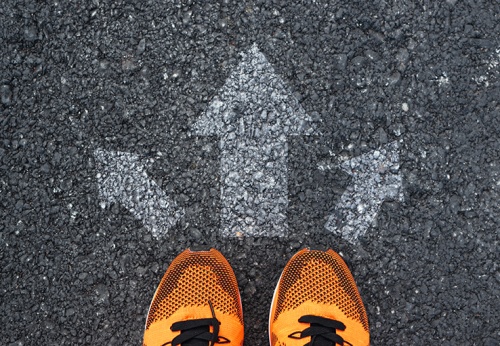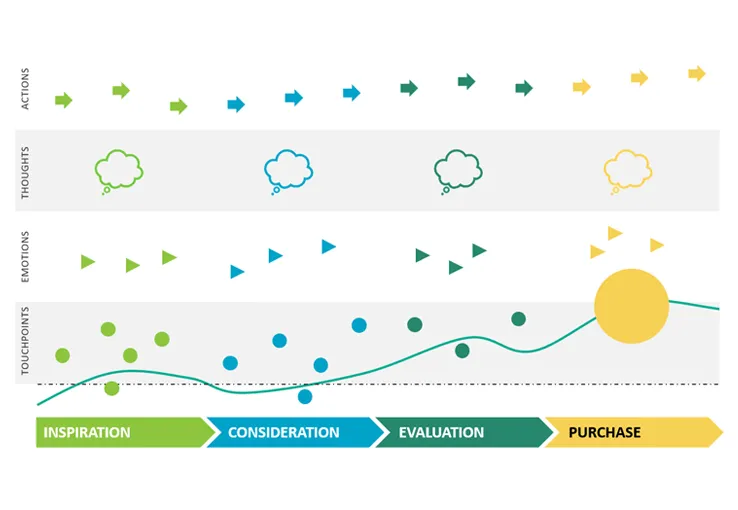What is a journey map?
In short, it’s a story.
When it comes to why people do what they do, there’s almost always a story. Consider when you run out of coffee. You realize you’re out, determine a replacement, and decide when and where you’ll get it: Order online? Pick up in-store? Which store? Now or later? If you’re waiting until later, you might grab coffee for the morning from a cafe nearby — but that’s another story. Stories are everywhere.
How do journey maps come into play?
Journey maps are about understanding and visualizing those stories. They identify and outline the stages of a process or experience to uncover pain points, barriers and, ultimately, opportunities to positively influence the outcome. You can pinpoint ways to improve these stories in hopes of building loyalty and increasing the chance that people will continue to use your service.
Elements of a journey map
What makes a journey map so powerful and unique is that it's a visualization tool that combines the path to purchase and customer journey. This means it includes all three of the following elements:
Channels of interaction
Channels are where or how a subject engages with the brand. A journey map contains a series of channels that depict each interaction someone goes through to achieve their goal or complete a task. Channels include everything from in-store to online engagements between a subject and company.
Actions taken
The next element reflected in a journey map is what the subject actually does at each channel. What do they do when they get to a store? Where do they go when they land on a website? These options are illustrated in a journey map with the corresponding channel.
Experience
This refers to what the subject thinks or feels throughout the process. These thoughts, feelings, or emotions are intertwined throughout the process to gain an idea of what the subject is experiencing and better understand the full story.
There’s no use in just knowing where someone went — you want to know why they went there and what it was like. Likewise, it wouldn’t make sense to simply know how someone felt about something they bought or did without knowing where they went and what they got or why. We want to know the whole story.
By combining channels, actions, and experiences throughout a process within a journey map, you get a holistic understanding of what’s happening at certain touchpoints and can determine potential solutions for making that experience more impactful.
The journey map sequel
Understanding the whole story not only uncovers actionable opportunities to improve experiences, but it also builds a unified, holistic vision of what people experience when they engage with your organization. By sharing this vision throughout the company and getting everyone on the same page, you can eliminate any confusion or disconnect that sometimes occurs as a result of organizational silos.
It also equips you to clearly determine who is responsible for making what changes at specific, imperative touchpoints. The person or team responsible becomes clearly accountable, which will help roll out the changes more efficiently.
Who needs journey maps?
Whether you’re looking to become a category-leading, “go-to” provider for something, wondering why your conversion rate isn’t as high as you anticipated, or wanting to develop more fruitful experiences, a journey map is a great place to start. You can uncover opportunities within your processes and create organizational clarity on your target consumers. Find out more about the journey mapping process or speak with one of our experts to see if journey mapping is right for you.


